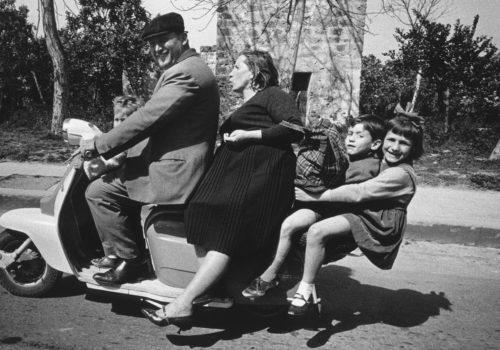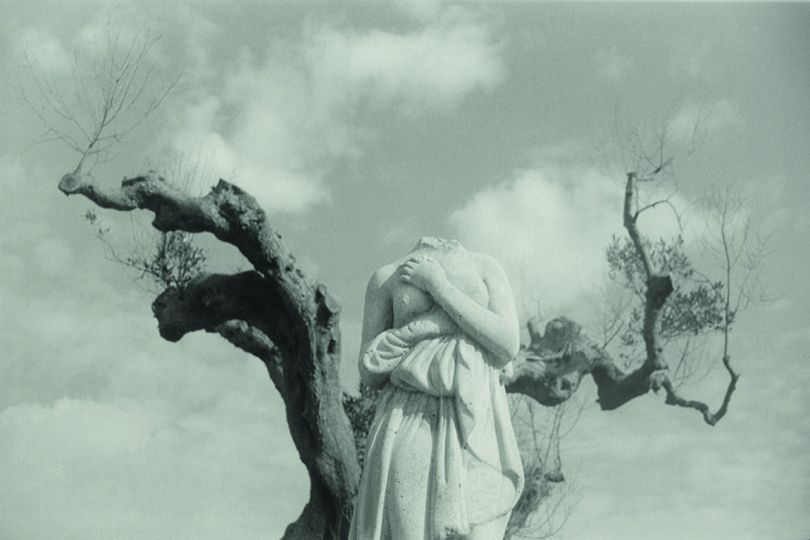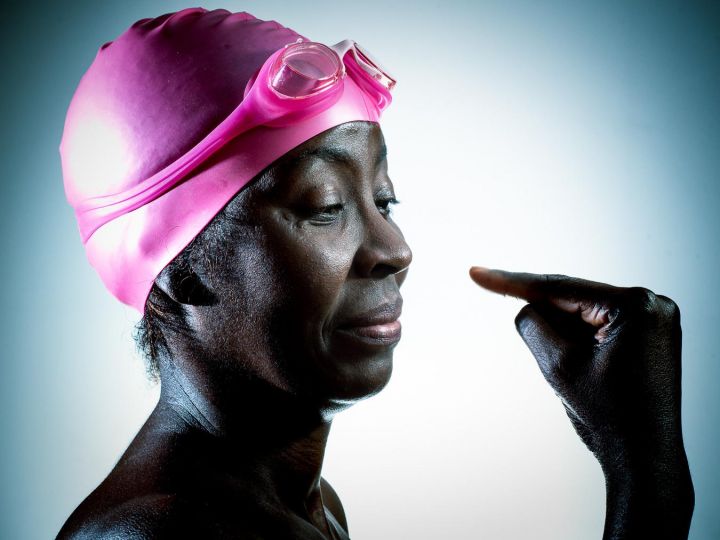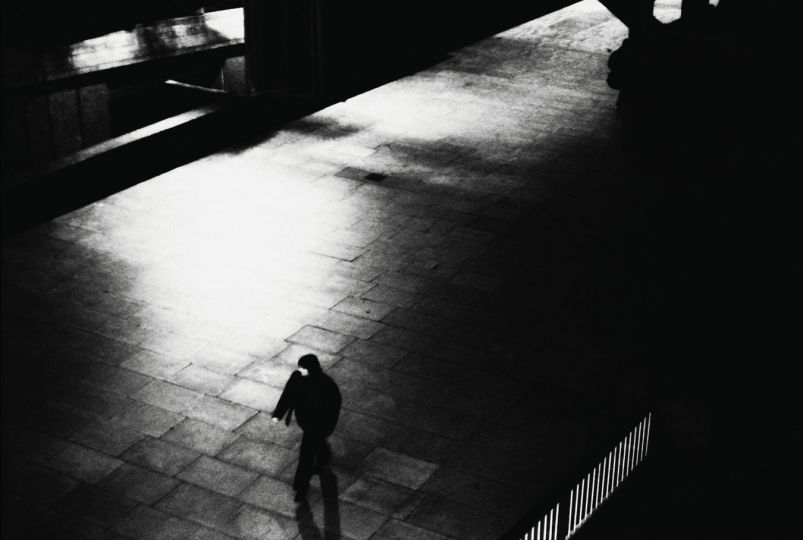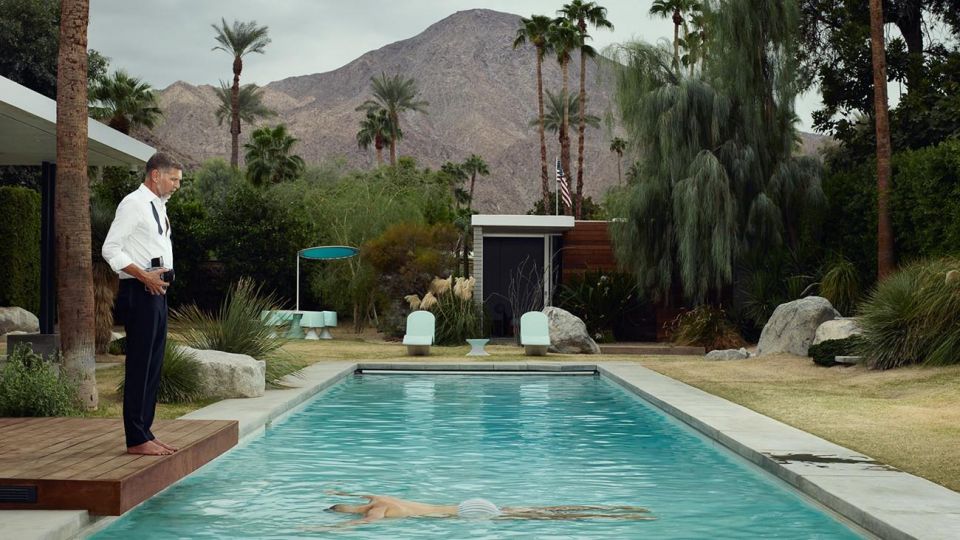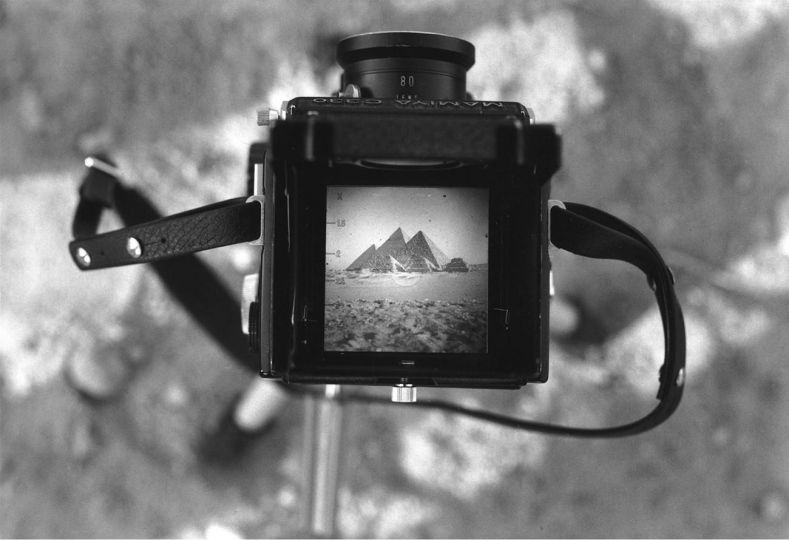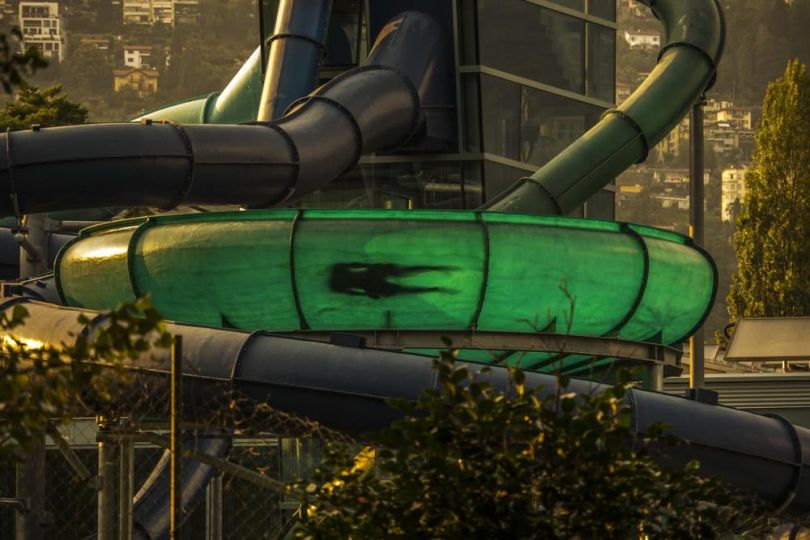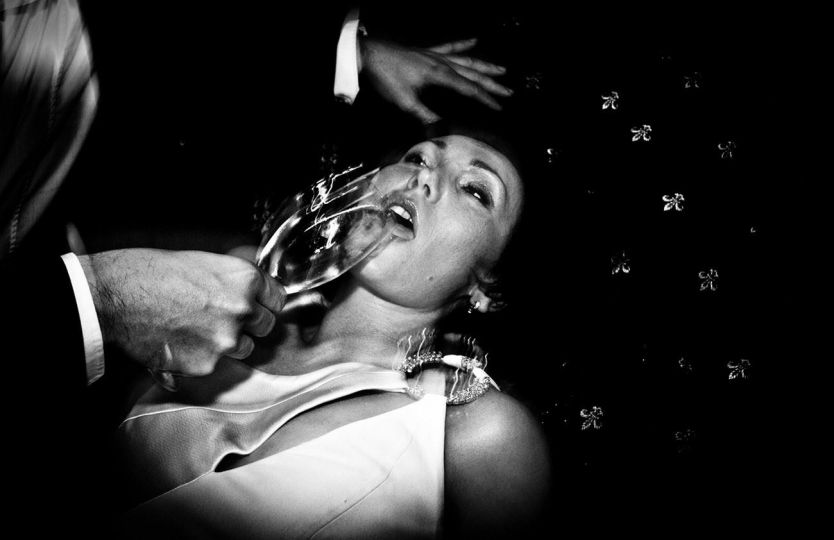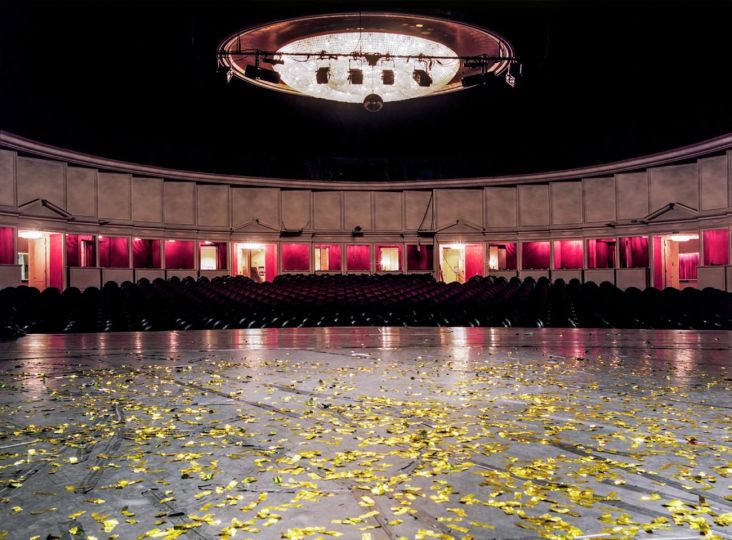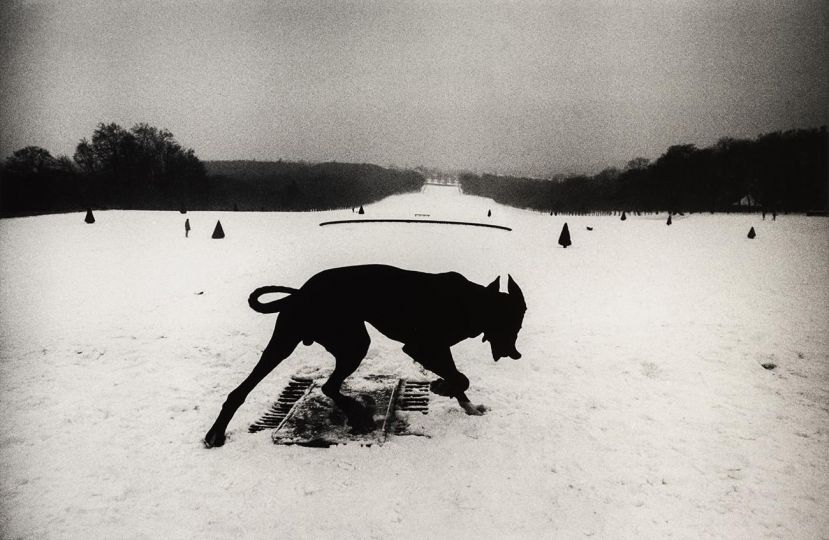Before graduating from the Ecole des Arts et Métiers of Vevey in Switzerland in 1962, Bruno Barbey was so bored that he decided to cross the border to check out the other side of the Alps. Italy was not far away, and Italian is one of Switzerland’s three official languages, so he wasn’t going to terra incognita. If he had brought along his camera, it was not for shooting advertising photos as per the teaching of his school. He already had the vague idea of taking the portraits of the people he was going to encounter in Italy. He was thinking above all of Robert Frank’s book “the Americans” (a Swiss man!) that Robert Delpire was the first to publish in 1958. A major reference book for a generation of photographers. At the same time, he remembered all of those characters he had discovered on the screens of the Cinémathèque de Paris, a temple he had frequented during his studies at the Lycée Henri IV. Those Italians from Roberto Rossellini (1906-1977), Vittorio de Sica (1901-1974), Luchino Visconti (1906-1976), Federico Fellini (1920-1993) to Pier-Paolo Pasolini (1922-1975), that had formed his visual education. In the new edition of his opus “Les Italiens” published by Delpire, the captions of the 87 prints featured in the book retrace his itinerary from the North to the South of Italy, from Milan to Naples, from Tuscany to Sicily, and focus on the years 1962-1966. It was thanks to this series of “the Italians” that Bruno Barbey received an invitation to join the Magnum agency in 1965 by Henri Cartier-Bresson and Marc Riboud.
Barbey’s “Les Italiens” is essentially made up of portraits. We soon realize his mastery of portraiture. Especially in this photo of Venice from 1962, where we see a man standing on a gondola, elegantly dressed in a large winter coat with the scarf neatly tucked under the lapels onto which a sort of black rosette was pinned. His stern and worried face under a felt hat – the famous Borsalino, his gloved left hand holding some documents, cutting a charismatic figure that reminds me of famous Italian judges or prosecutors from the years of anti-corruption and anti-Mafia campaigns. Such as Judge Antonio Di Pietro (born 1950) from the Mani Pulite operation, or Judge Giovanni Falcone (1939-1992) a martyr of the fight against the Mafia.
What could be more Italian than this collection of Borsalino hats? This felt hat adorned with a ribbon worn so well by Fellini and Mastroianni in their 1963 film “Otto e Mezzo”. A few pages later in Barbey’s book we find the Borsalino on the heads of three men seated behind a pool table, in Caltanissetta (1966). You’d think they’d come straight out of Francis Ford Coppola’s 1972 film “The Godfather”. The man sitting in the center, a cigarette dangling from his mouth, looked at Bruno with a smirk, his open trench coat revealing a tie clip. Was he a police inspector or a “godfather”? Another picture from Caltanissetta shows a group of men in heavy winter coats and Borsalino hats sitting in a gathering. The fellow in the foreground looks up towards Bruno, he has the face of a killer. Life and death in Southern Italy, captured by Barbey in this terrifying dead-eye gaze of an undertaker wearing a top hat and riding a funeral carriage in Naples 1964. Caltanissetta in Sicily is known to have been home to the Cosa Nostra, including the Corleone family… Did Barbey actually photograph some real mafiosi? We will never know.
As we can see, these photographic portraits by Bruno Barbey are so “Italian” that they awake in us a desire to watch those movies again, in their original Italian-speaking version, especially the neorealist cinema. Reading the names of the towns and countries mentioned in the book’s captions, we have the impression that Barbey is taking us on a “Journey to Italy” (Viaggio in Italia 1954 by Rossellini), or on “A Long Road of Sand” by Pier-Paolo Pasolini (La Lunga Strada di Sabbia a story of 1959). His black and white universe is not only drawn from photography but also from cinema. Oftentimes we feel like a camera panning movement that captures its characters in motion, even though they seemed frozen, like these prostitutes dressed to look like Barbie dolls, who were conducting business on a street in the city of Genoa (Liguria 1966) in a staging worthy of Fellini in a Cinecittà setting.
Travel and Mobility, these are the two themes that come to mind when we browse through “The Italians”. Bruno seemed notably attracted by these suitcases tied and piled up in the waiting room of a Milan train station, watched by a single man in front of the information desk flanked by posters of Switzerland… fade-in to another pile of suitcases tied with anti-theft string, disposed on the platform of the station in front of a train bearing the destination “Zurich”. Mobility again: this Sicilian family from Palermo (1963) spinning on a backfiring Vespa, the husband with his hands on the handlebars flashes a big smile at Bruno, his wife side-saddling behind with her two happy bambini clinging to her back. Was it a “4 + 1” on the Vespa? Because Bruno had confided to me that this mamma was in fact pregnant, so there was another little brother in her belly that was not visible yet. This is post-war Italy, engaged in a phase of demographic reconstruction after the country saw an entire generation of men decimated by war. Why was this other Vespa, the Italian CULT scooter invented in 1946 and revered as a precious possession, sitting in the bedroom of a young man in bed? We find ourselves in the middle of a surreal decor, covered with climbing vines wallpaper, with a full set of furniture: a dining table topped with a bouquet of white chrysanthemums, a television set flanked by a Rococo lampshade, a mirror next to a chest of drawers, a small frame of Jesus above the bed where the owner of this surprising bachelor pad defies the photographer with his gaze. One wonders if in the middle of the night this young man wouldn’t get up from time to time to check that his Vespa hadn’t been stolen.
How did Bruno Barbey manage to penetrate without breaking-in all these interiors, in Roma, Milano, and Napoli? Bruno knew the Italians’ passion for Bel Canto, for Verdi and Puccini, so he went to the opera to mingle with these signori in tuxedos, these aristocratic signore and high society ladies in their splendid evening dresses, their pearl necklace and their bouffant hairstyle fresh from the hairdresser’s. At the cult opera house in Milan (la Scala 1964) or in Naples (the San Carlo 1966), we imagine Bruno trying to blend in with the crowd, dressed up in a tuxedo with a bow tie, his Leica in hand. Conversely, he was quite capable of going down to the countryside, to the region of cave dwellings in Basilicata (bordered by Calabria and Puglia), to witness a meeting of peasants in near total darkness, in Matera (1964), where he captured their faces scarred by the harshness of the living conditions.
Mobility or immobility? What was this young dreamer thinking about, leaning against the windshield, lying on the hood of a car with flat tires (Rome 1964)? How to travel on the carcass of a disabled automobile becomes a surrealistic poem. Yet that beautiful photograph of Bruno Barbey’s was featured on the cover of the first edition of Les Italiens (2012 La Martinière), now out of print.
Barbey had this special gift of drawing attention to himself, like the young girl on the cover of his new book, her questioning gaze that challenges us directly. Was she queuing at the cinema with her sister and little brother (wearing hat and sunglasses)? Bruno’s magnetic lens often catches the gaze of his subjects. Even behind their sunglasses. Like this Easy Rider on his motorbike (Rome 1964) posing in the middle of a derelict courtyard. Or this trio of rock and rollers (Rome 1966) with their feet resting on a sidecar motorcycle. What were they saying to Bruno? Were they talking about engine power? Bruno happened to be also a biker. One of his self-portraits from the 1960s shows him with hands on the handlebars of a sidecar motorcycle bearing the MAGNUM plate. Did he impersonate the courier delivering press prints to newspapers’ offices?
These scenes and other visual dialogues of Bruno remind me of the Italian portrait master Ferdinando Scianna, member of Magnum, whom I quote here: “We often tell people: come here, let me immortalize you. Immortalize you! What an arrogant language to exorcise the anguish of our impermanence.” Yet, he writes on, “in this hyperbole there is a residue of that Faustian myth that man, ever since he first became aware of himself, and hence of time, has always foolishly pursued. Let’s stop time, if only for a moment! “. Bruno Barbey stopped the time for a moment, on this beach in Rome (1964) which recalls Pasolini’s “The Long Road of Sand”. Alas, this very Ostia Beach would sadly be fatal to Pasolini. Through this band of ragazzi and ragazze in bathing suits and bikinis, who were oblivious to the presence of the photographer and totally spellbound by the enjoyment of their golden youth, Bruno has captured an idyllic image of the eternal summer love of the Italian Riviera. We could almost hear again the slow songs of summer 64: “Una lacrima sul viso” by Bobby Solo, or “Non ho l’età” by Gigliola Cinquetti…
Thanks to Bruno’s quest, that time has never been lost again.
Jean Loh
« Les Italiens » by Bruno Barbey, published by les Editions Delpire 2023.
This book will accompany the exhibition “The Italians” at the Pavilion Comtesse de Caen in the French Academy of Fine-Arts from 10 May to 2 July 2023.
The exhibition is curated by Caroline Thiénot-Barbey and Jean-Luc Monterosso.
Bruno Barbey : Les Italiens
from May 11 to July 2, 2023
Académie des beaux-art
Pavillon Comtesse de Caen
Palais de l’Institut de France
27 quai de Conti, Paris VIe
www.academiedesbeauxarts.fr

